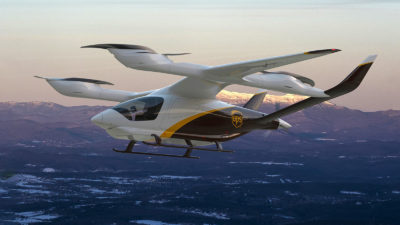Hypersonic flight systems: From research and testing to business analysis
By Khaled A. Sallam|December 2021
The High-Speed Air-Breathing Propulsion Technical Committee works to advance the science and technology of systems that enable supersonic and hypersonic air vehicle propulsion.
In September, DARPA,working with the U.S. Air Force, completed a free flight test of its Hypersonic Air-breathing Weapon Concept. Raytheon Technologies built the missile, which is powered by a Northrop Grumman supersonic combustion ramjet, or scramjet, engine. Test goals included vehicle integration and release sequence, safe separation from the launch aircraft, booster ignition and boost, booster separation and engine ignition, and cruise. Researchers met all primary test objectives.
The Hypersonic Technology Project, part of NASA’s Aeronautics Research Mission Directorate Advanced Air Vehicles Program, conducted fundamental research on dual-use technologies, analytical tools, test techniques and capabilities to enable routine, reusable hypersonic flight for point-to-point travel and space access associated with commercial and U.S. Department of Defense hypersonic missions. NASA HTP funded two studies that were completed in April by teams led by United Kingdom-based Deloitte and Virginia-based Science Applications International Corp. These studies indicated that there are viable markets for high-speed/hypersonic point-to-point vehicles for certain long-distance city pairs.
As part of a collaborative effort with the University of Maryland, the Office of Naval Research and Air Force Office of Scientific Research, NASA HTP researchers developed new flow-field measurement techniques to provide data on fluid-structure interactions needed by designers of hypersonic flight systems. Researchers developed this new focused laser differential interferometry system to provide non-intrusive, high-speed (megahertz) density fluctuation measurements in hypersonic wind tunnel facilities. In addition to characterizing the tunnel freestream environment, researchers measured the near-surface boundary layer flow over the test model and validated it with high-speed schlieren imaging. The two separate laser lines with 16 points distributed evenly along each allowed for spatial evolution and velocity measurements of the fluctuations, providing data for comparison to surface-mounted pressure probes.
In August, Space Engine Systems, based in Canada, developed a scale-model engine and a three-degree-of-freedom thrust test cell to validate engine thrust, moments and flow characteristics across the full range of simulated flight speeds (Mach 1.8-5). Over seven months, SES also developed, prototyped and constructed its uncrewed demonstration vehicle, designated as Sexbomb. The goal, pending FAA approval, is to air-launch at 57,000 feet and Mach 1.8, from which it would accelerate over five minutes to Mach 5 and then glide to land. Current testing focuses on the vehicle body’s cooling capabilities for Jet-A, cryogenic and other fuels, validating the technology for larger vehicle bodies and informing the design of the company’s commercial turboramjet-rocket demonstrator, Hello-1.
The Institute of Space Propulsion of the German Aerospace Center, DLR, operates a hydrogen/oxygen air vitiator test bench in Lampoldshausen that is capable of simulating Mach 5.5 to Mach 8 high-speed flight combustion chamber inlet conditions. In September, DLR finished the composite material test campaign for scramjet engines, which started in 2020 and had some covid-19-related delay. The update of the bench’s data acquisitioning and optical measurement technique systems is embedded into the European multinational project on multidisciplinary design and optimization and regulations for low-boom and environmentally sustainable supersonic aviation, or MORE&LESS. The project started this year as a successor of Stratofly and investigates pollutant generation, atmospheric impact and combustion processes for high-speed flight and supersonic transport with a focus on the application of bio-fuels for high-speed air-breathing propulsion. The results of this four-year project will be vital for a European legal framework on supersonic flight regulations that accompanies the U.S. efforts on this topic from FAA, NASA and others.
Contributors: Jesse Kadosh, Mary Jo Long-Davis, Daniel Paxson and Friedolin Strauss



































